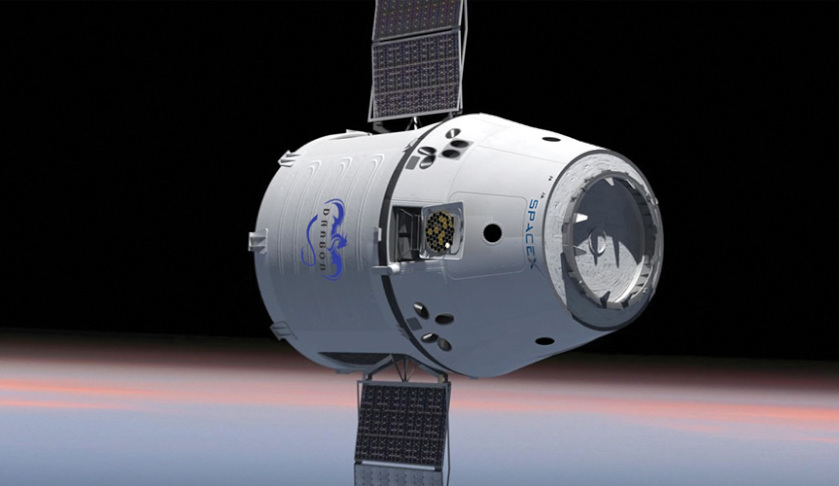The Dragon was on a resupply mission to the International Space Station (ISS), delivering almost two tonnes of cargo including crew supplies and science experiments.
The Falcon 9 rocket blasted off from Cape Canaveral on 6 March with the Dragon taking three days to reach the ISS.
Among the payloads was the Airbus Bartolomeo, a payload hosting platform to be installed on the station’s Columbus module.
Bartolomeo will be operated by Airbus as a commercial platform in co-operation with the European Space Agency and will take its first payloads from second quarter.
Dragon will remain docked at the ISS for about a month before returning with 1,680 kilograms of cargo.
The precise return date depends on weather conditions and completion of science experiments that will be brought back to Earth.
The Falcon 9 first stage successfully touched down back at Cape Canaveral eight and a half minutes after blast-off, marking the 50th successful recovery of a rocket first stage.
SpaceX had hoped to hit that milestone last month with the launch of the latest batch of Starlink satellites but the first stage just missed the recovery droneship and splashed down close by in the Atlantic. It may still be reusable.
The Dragon spacecraft’s return to Earth will mark the final mission of SpaceX’s original commercial resupply services (CRS) contract with NASA. That was awarded in December 2008 and originally included 12 flights to the ISS at a cost of US$1.6 billion.
NASA subsequently added another eight missions to the contract, taking the total value to US$3.1 billion.
In January 2016, SpaceX then won one of three CRS-2 contracts, along with Orbital ATK (now Northrop Grumman) and Sierra Nevada Corporation, to continue cargo deliveries to the ISS. The first SpaceX mission of CRS-2, called CRS-21, will launch later this year.
Future SpaceX CRS missions will use a version of the Crew Dragon spacecraft that SpaceX has developed for the NASA commercial crew program.
The cargo version lacks the SuperDraco thrusters of the Crew Dragon launch abort system. It has around 20 per cent greater cargo capacity than the current cargo Dragon.
It will also be used more, with a design life of five or more flights against the existing cargo Dragon’s three.

